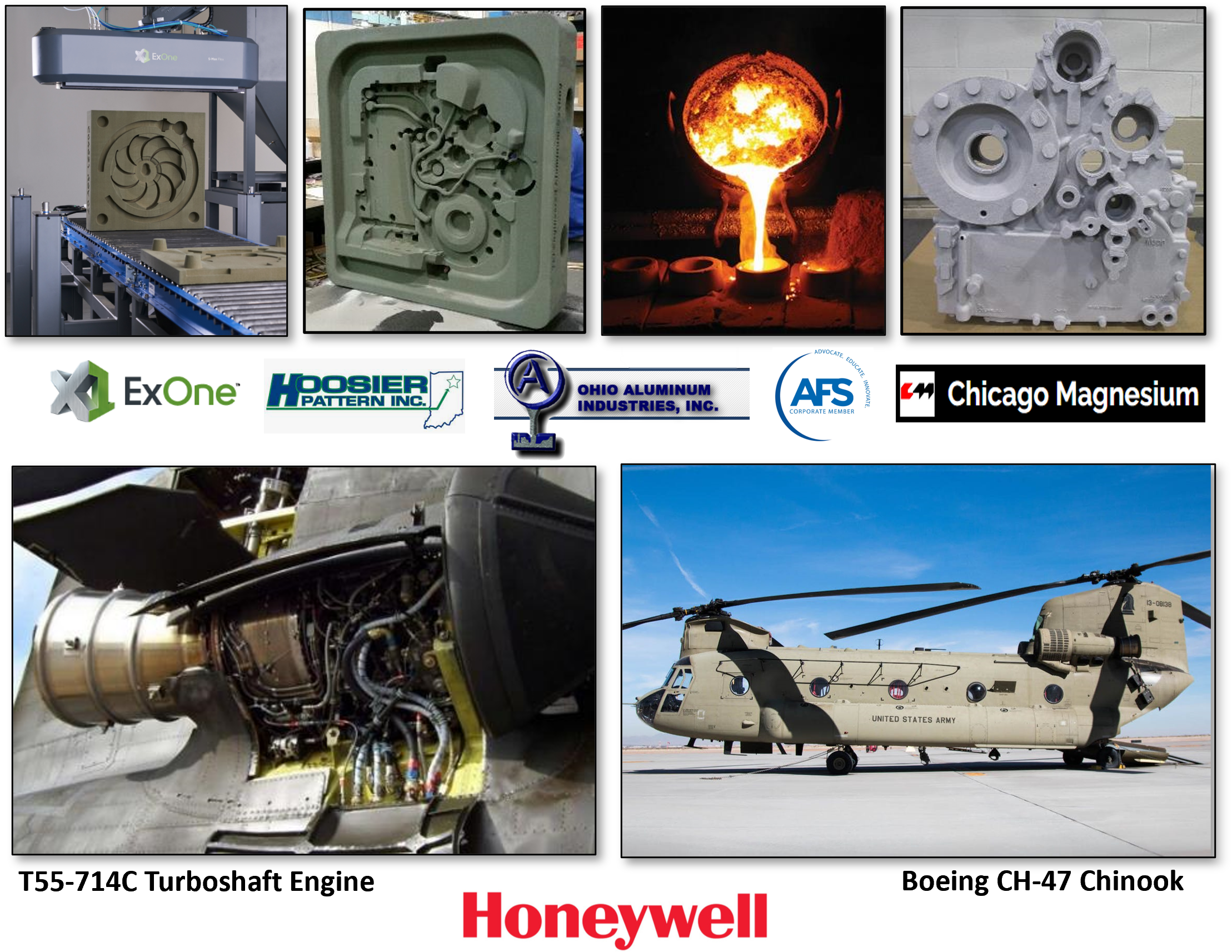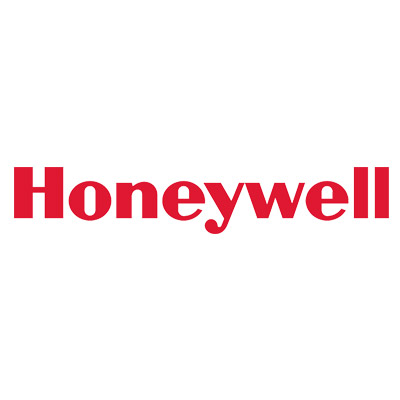


Additive manufacturing and casting supply chain for Honeywell T55-714C turboshaft engine used in Boeing CH-47 Chinook Helicopter
Problem
Honeywell is currently exploring the application of additively manufactured (AM) sand molds to produce gearbox housings, covers, and inlet housings for the Chinook Helicopter T55-714C engine. Challenges related to the quality of parts produced using AM sand molds are impeding the use of this technology. The final cast parts often fall short of acceptable standards due to issues related to surface roughness, dimensional accuracy, and porosity resulting from outgassing of the mold during the casting process. The subpar quality of these components necessitates additional rework cycles, causing delays in receipt of initial castings. The challenges faced by Honeywell mirror the broader issues faced by the domestic sand-casting industry, explaining the limited integration of AM-printed sand molds in their processes.
Objective
The primary objective is to improve the casting quality of parts produced with AM sand molds by evaluating and implementing measures to improve surface roughness, minimize dimensional variations, and reduce porosity caused by outgassing of the sand mold. The project team plans to disseminate the best practices and technological advancements established through training and presentations at industry-wide conferences to foster widespread adoption of AM sand molds within the casting industry.
Technical Approach
The technical approach begins with the baseline process confirmation task where Honeywell, Ex-One, Hoosier Pattern, Ohio Aluminum, and Chicago Magnesium will baseline current state-of-the-art processing parameters for AM sand molds and cores. During this task, quality characteristics of the cast parts are being evaluated and documented relative to part design requirements.
Following baseline confirmation, the project team is evaluating technology improvements that address identified quality gaps. Options include mold/core orientation during build, layer thickness, and sand particle size distribution to enhance surface finish. Coatings applied to AM sand molds and cores are also under consideration to alleviate stair-step effects and other surface roughness issues. To reduce outgassing, methods such as pre-burning out the cores prior to casting, reducing the amount of binder used, altering binder composition, and evaluating different venting options are being investigated.
On completion of the technology improvement tasks, a combination of options is being collectively evaluated by the project team through casting trials utilizing the recommended improved AM molds/cores to determine if project objectives are achieved.
As a final task for the effort, the American Foundry Society (AFS) is slated to conduct outreach and identify educational opportunities to the domestic casting industry, to share established best practices.
Project Participants
Project Principal

Other Project Participants
- NCDMM/America Makes
- Ohio Aluminum
- Chicago Magnesium
- ExOne
- Hoosier Pattern
- American Foundry Society (AFS)
Public Participants
- U.S. Department of Defense
